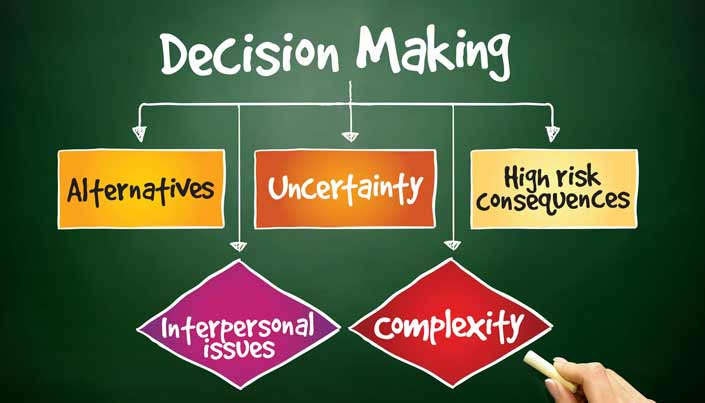The first step in making a decision is to analyze the options. Once you have weighed your options, you should commit to your decision. Next, you should plan out your next steps. Many people make decisions, only to forget about them a few days later. Fortunately, there are many ways to stay on track. Here are a few of them. Following a few simple guidelines can help you make the best decision.
Analysis of a situation before making a decision

Whether it’s an investment in a new product or a new strategy, the analysis of a situation before making a decision can help you decide which path to take. Various analyses can provide you with the information you need to make the best decision for your business. However, the key to making informed decisions is knowing when and how to deal with uncertainty. Here are three ways to do this.
Performing a situation analysis allows you to understand the risks, opportunities, and challenges facing your business. It also allows you to define the scope of a problem and map a path to your desired state. Situation analysis is especially important when a new project or process is being introduced. By doing so, you’ll know which steps to take to reach your desired outcome, and you’ll avoid making a wrong move.
Giving yourself time to make a decision
Setting a deadline for making decisions is an essential part of the Work It Daily Challenge. This is particularly useful when you have a lot of options and it’s hard to choose between them. Putting off decisions can lead to stress, anxiety, frustration, and wasted time. Moreover, a decision can be influenced by multiple factors, so setting a date is imperative. In addition, giving yourself time to make decisions can help you stay calm and focused during the process.
It’s a good idea to rate each decision on its importance, and then allocate a certain amount of time to each. For example, a decision of minimal importance should not take more than a few minutes, while a more important one should be given sufficient time. Moreover, if you’re unsure of what to do, you can try debating the decision with yourself. This can help you make a better decision.
Foresight
The process of foresight involves selecting a preferable future scenario for a given situation. The mind is a complicated system, and different people have different methods of foresight. Foresight experts propose different frameworks, which focus on the general process of foresight implementation. The most basic foresight model involves the use of a graphical representation of the mind’s contents, which is known as a cognitive map, Check out this site.
Foresight differs from forecasting in that it is a process rather than a technique. It allows participants to explore long-term visions and desired future conditions. The goal of strategic foresight is to help decision makers create strategic plans that will be compatible with the unfolding future. Here are some examples of the benefits of strategic foresight:
Understanding the difference between rationally the best choice and the decision that simply feels right

While we don’t necessarily choose the rationally best option in every situation, we can be prone to make rational choices for our own good. The irrationality feature of our behavior is essential in understanding if a decision is rational or not. It can be useful to use the irrationality feature to help make rational choices. Then, we can consider the decision in terms of its merits and consequences.
Conclusion:
To understand the difference between rationally the best choice and a decision that simply feels right, we should start by looking at how the different systems of requirements in our society function. The concept of law is a good example of this. It is a legal requirement to behave in a certain way. But law is not a rational choice – it’s a system of norms that gives rise to a certain set of requirements.
